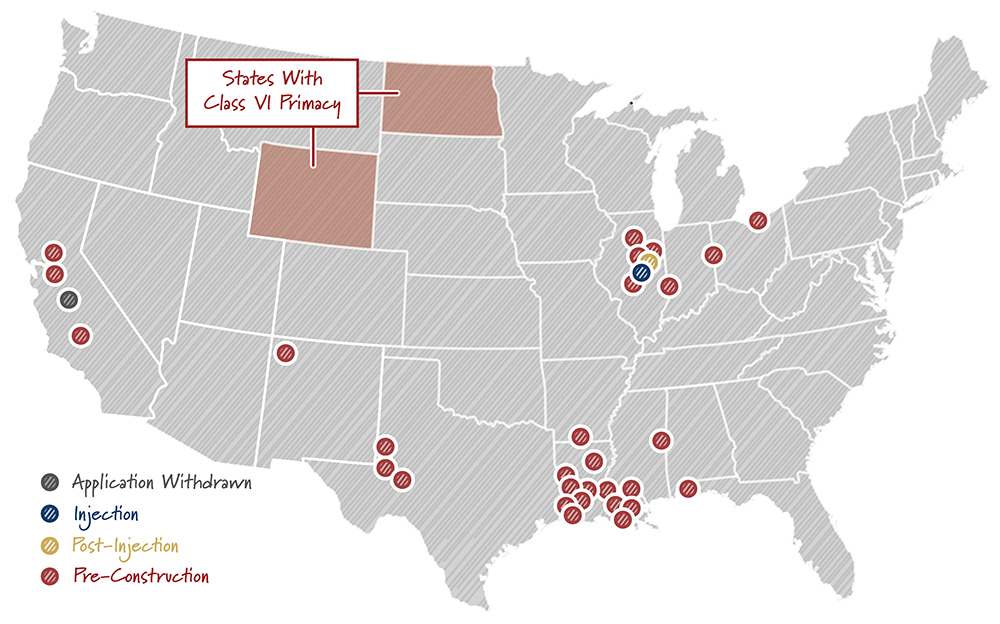Posted on September 21, 2023 by Matthew Mailloux
This year at New York Climate Week, ClearPath partnered with the American Petroleum Institute (API) to host an event showcasing the future of carbon management. The conversations underscored the opportunity for the oil, gas and petrochemical industries to lead the carbon dioxide emissions reductions at scale.
The event brought together top thought leaders, project developers, investors, and senior Department of Energy (DOE) officials to discuss how technologies such as carbon capture, utilization and storage (CCUS) and direct air capture (DAC) are putting America on a clear path to global energy leadership and dramatically reducing and removing carbon dioxide emissions. Conversations also focused on the need for permitting reform to deploy these types of projects on time and at scale.
Providing these technologies with a larger climate platform and bringing key stakeholders together to discuss implementing the largest low-carbon energy investment programs in U.S. history is something we need more often. This is especially true as $12.1 billion demonstration projects authorized by the Energy Act of 2020 and funded through the bipartisan Infrastructure Investment and Jobs Act (IIJA) begin to roll out nationwide, most notably through the DAC and Hydrogen Hubs project selections.
The U.S. economy is still feeling the effects of prolonged economic inflation, high gas and electricity prices, post-Covid global supply chain chaos, and Russia’s war in Ukraine. These developments, combined with production cuts from OPEC+ and China’s increasingly transparent efforts to dominate markets have exacerbated the ongoing global energy crisis. All of these factors heighten the need for American clean energy leadership.
The U.S. has both a cost and energy security advantage relative to global competitors when exporting hydrogen produced from natural gas with carbon capture. This is due to abundant U.S. gas supplies and current policy, like the enhanced 45Q tax credit, which has no international equivalent. Additional policy wins, such as the Energy Act of 2020, have positioned the U.S. energy sector as the global leader in CCUS and DAC research and deployment, which is key to global decarbonization goals. America’s largest energy producers, utilities, agriculture companies, financial institutions and other leaders increasingly make carbon management a fundamental pillar of their long-term business strategies.
With more than 60 CCUS projects in various stages of development, two major DAC hub awards announced, and more than 150 Class VI wells currently in the permitting queue, companies are primed to begin to scale clean energy projects. For industry to successfully deploy these innovative projects and reach ambitious targets, private and public institutions must work together to streamline permitting processes and provide regulatory certainty to get steel in the ground. The recent restart of the Petra Nova facility highlights the immediate, real world opportunity for these technologies to reshape the energy landscape.
Counties with Active EPA Class VI Well Applications

The next generation of CCUS projects will accelerate the shift from innovative, bespoke projects to replicable builds that can more easily attract the necessary financing, permits, and related supporting infrastructure necessary to deploy these technologies at scale. CCUS can achieve 14% of global emissions reductions needed by 2050 and is viewed as the only practical way to achieve deep decarbonization in the industrial sector. The Intergovernmental Panel on Climate Change (IPCC) agrees, with fossil energy with CCUS, clean hydrogen, and nuclear energy all playing a significant role in any low-carbon energy pathway.
These technologies can also greatly reduce emissions in the industrial, transportation, and power sectors. At Climate Week, we heard from companies like Chevron, Exxon Mobil, Enbridge, Baker Hughes, 1PointFive Sequestration, Frontier Carbon Solutions, and others who are pursuing these clean technologies.
To address these big opportunities, the Climate Week event featured remarks from top executives, DOE, and panels covering the landscape of carbon management technologies, the need for carbon storage and transportation infrastructure, regulatory approvals, permitting delays, and expanded financing opportunities.

Thanks to our speakers: David Crane, Under Secretary for Infrastructure, U.S. Department of Energy (DOE); Leslie Rich, Senior Consultant, DOE Loan Programs Office; Doug Schultz, Director of Loan Guarantee Origination, DOE Office of Clean Energy Demonstrations; Lily Barkau, Groundwater Manager, Water Quality Division, Wyoming Department of Environmental Quality (DEQ); Jeff Alvarez, President & General Manager, 1PointFive Sequestration; Shannon Angielski, Executive Director, Carbon Utilization Research Council (CURC); Susan Blevins, Climate Policy Planning Senior Advisor, ExxonMobil; Jeremy Harrell, Chief Strategy Officer, ClearPath; Edward Herring, Co-Founder and Managing Partner, Tailwater Capital; Nigel Jenvey, Executive – Strategy & Growth Initiatives, Baker Hughes; Michael Johnson, Vice Chairman of Investment Bank, JPMorgan Chase and Co.; Balaji Krishnamurthy, Vice President, Strategy and Sustainability, Chevron; Sasha Mackler, Executive Director of the Energy Program, Bipartisan Policy Center; Dustin Meyer, Senior Vice President, American Petroleum Institute (API); Aaron Padilla, Vice President, Corporate Policy, American Petroleum Institute (API); Rich Powell, CEO, ClearPath; Pete Sheffield, Chief Sustainability Officer, Enbridge; Alicia Summers, Chief Development Officer, Frontier Carbon Solutions; and Chris Weber, Head of Climate and Sustainability Research, BlackRock Investment Institute
